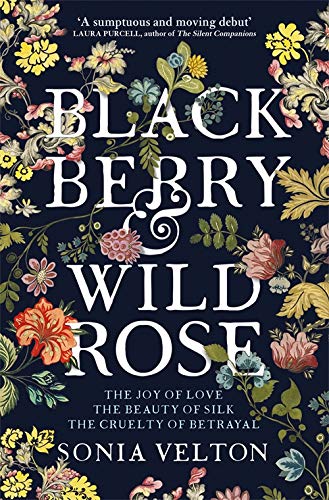Why a Booktrail?
1768 onwards: The price of silk is a high one indeed…

1768 onwards: The price of silk is a high one indeed…
When Esther Thorel, the wife of a Huguenot silk-weaver, rescues Sara Kemp from a brothel she thinks she is doing God’s will. Sara is not convinced being a maid is better than being a whore, but the chance to escape her grasping ‘madam’ is too good to refuse.
Inside the Thorel’s tall house in Spitalfields, where the strange cadence of the looms fills the attic, the two women forge an uneasy relationship.
It is silk that has Esther so distracted. For years she has painted her own designs, dreaming that one day her husband will weave them into reality. When he laughs at her ambition, she unwittingly sets in motion events that will change the fate of the whole Thorel household and set the scene for a devastating day of reckoning between her and Sara.
The price of a piece of silk may prove more than either is able to pay.
The author states that Esther is loosely based on the real life figure of Anna Maria Garthwaite, the foremost designer of Spitalfields silks during the mid-eighteenth century. She is credited with bringing the artistry of printing to the loom, although her success predated the industrial troubles of the Spitalfields silk industry by some years.”
Some of her silks can still be appreciated today in the Victoria and Albert Museum.
In the novel the chaos and noise of the markets comes through loud and clear. The English silk weavers are forced to come together as the importation of cheaper silks from France is costing them dear. The two weavers who Esther and Sarah meet are in trouble. One hides out in Esther’s loft and uses her loom in secret. He is trying to become a master weaver and this would cause tension with “his people”
“Do you know how many journey mean silk weavers become masters, madam? Almost none. Only the masters have the capital to establish themselves. Only the masters can afford the fee to the Weaver’s company.”
The tensions and meetings between English weavers is well evoked with fights, squabbles, one ruining the silk of another in order to keep their livelihood afloat and the trade alive.
Enter Esther, who believes silk weaving should try and incorporate more curved designs such as flowers.She works with one of the weavers in secret.
Sadly Buttermilk Alley where Sarah pays them a visit does not seem to exist in real life, but it’s a hot bed of anger and self-expression. These people have a trade and they are proud of it. Trade Unions or combinations as they were known then had a hard time keeping these weavers aligned.
Silk would come at a high price.
Susan: @thebooktrailer
It’s a fascinating look into the silk industry and the conditions they had to work under. There are struggles and a real sense that we are getting an insight into the political and social movements of the time as well.
The London of this era comes alive with vivid, layered descriptions, of time and setting. The issues here are as complex and as tightly woven as the fabrics. What happens when you pull a thread…you’re never sure where it’s going to end, but what you get is a long and twisty tale with many curls of intrigue along the way.
This wove a spell for me in many ways. Beguiling.
Destination : London Author/Guide: Sonia Velton Departure Time: 1768 onwards
Back to Results1910. 1970s :In the middle of a severe storm two sisters rescue a mysterious man from a shipwreck.
Read more